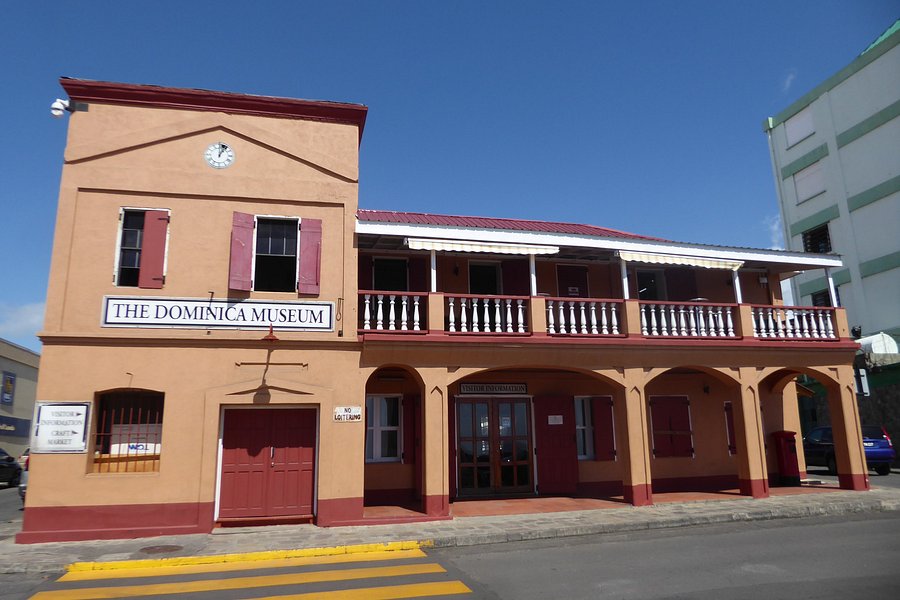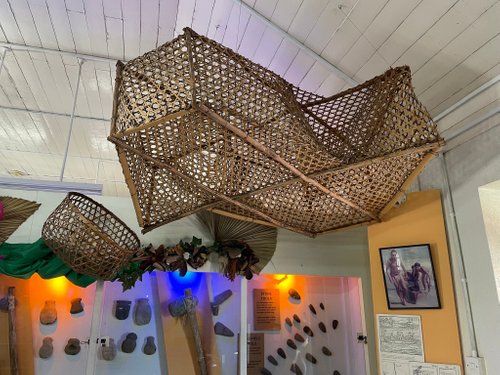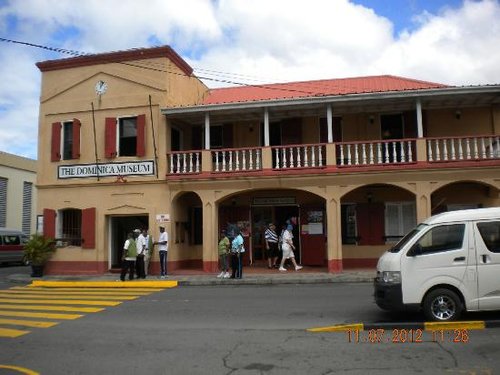Roseau Museum, Saint George Parish, Dominica
4.0 (68 reviews) Spent Ranking #9 in Saint George Parish Speciality Museums

Small But Interesting
This museum highlights the island's cultural and natural history.


Address
, Roseau, Caribbean.
Current local date and time now
Monday, May 13, 2024, 14:29
User Ratings
4.0 based on (68 reviews)
Excellent
17%
Good
53%
Satisfactory
21%
Poor
9%
Terrible
0%
Reviews
-
4BobMcC44 5:00 PM Nov 27, 2012
Roseau Museum, a great way to discover Dominica's History
The museum is a great option if you want something to walk to. It is located across the street and to the right of the cruise ship pier and is a good bargain for the $3.00 entrance fee. $1.00 fee if you need a bathroom. You will find the staff to be extremely friendly, helpful and knowledgeable about the Carib Indians and Kalinago people. Picture taking is allowed in the museum and there are some very colorful displays with nice examples of vintage clothing.

-
4retireeVancouver 5:00 PM Jan 31, 2023
Worth a visit when in Roseau
I was pleasantly surprised with the interest I had in the displays in this museum. Located across the street from the cruise ship port, the museum, located on the second floor of the old post office building, consists of 3 small rooms that are packed with information about the island from its geological times to Victorian times. The display included a Carib dugout canoe and baskets used for fishing, a Carib grass hut, a small display showing Blacks on a slave ship, a surveyor's map showing how the British had divided up the island, pictures of colonial life, and Victorian household articles. All displays had labels and explanations. Entrance fee was $3US. AC conditioned rooms made the 30 minute visit so much better. I liked the displays showing pre-European living conditions like the fishing display with its baskets, photos, and explanations of how fish were caught in the shallow shoreline. This display had a Carib dugout canoe on the floor for visitors to examine along with pictorial and typed explanations of how the Caribs made them from certain trees and the stone tools they used. I wondered if the early Caribs had used canoes like this to navigate to connecting islands as well as for fishing. Seeing the grass hut, I was amazed at how ingenious the simple looking construction actually was using materials at hand. The displays surrounding the colonial period showed the cultural changes the Europeans brought. The slave trade and its industry was de-emphasized. I was particularly interested in the surveyor's map showing how the island was divided into lots with the explanation that the British took/bought the best parcels of land. It wasn't clear if the Caribs had to buy their lots too, usually the poorer lots located up on a mountainside. Other displays showed how Europeans brought cultural changes to the island – clothing styles, communication devices, household articles like irons and sewing machines. There was a nod to the island’s novelist Jean Rhys. Since the museum has limited space, there were topics not addressed.
See also
More Things to do in Saint George Parish
- Points of Interest & Landmarks in Saint George Parish
- Churches & Cathedrals in Saint George Parish
- Historic Sites in Saint George Parish
- Ancient Ruins in Saint George Parish
- Speciality Museums in Saint George Parish
- History Museums in Saint George Parish
- Religious Sites in Saint George Parish
- Gardens in Saint George Parish
- Mountains in Saint George Parish
- Waterfalls in Saint George Parish
- Nature & Wildlife Areas in Saint George Parish
- Spas in Saint George Parish
- Speciality & Gift Shops in Saint George Parish
- Taxis & Shuttles in Saint George Parish
- Thermal Spas in Saint George Parish
- Sightseeing Tours in Saint George Parish
- Beaches in Saint George Parish
- Hiking Trails in Saint George Parish
- Nature & Wildlife Tours in Saint George Parish
- Shopping Malls in Saint George Parish
- Breweries in Saint George Parish
- Art Galleries in Saint George Parish
- Libraries in Saint George Parish
- Farmers Markets in Saint George Parish
- Hot Springs & Geysers in Saint George Parish
- Bars & Clubs in Saint George Parish
- Distilleries in Saint George Parish